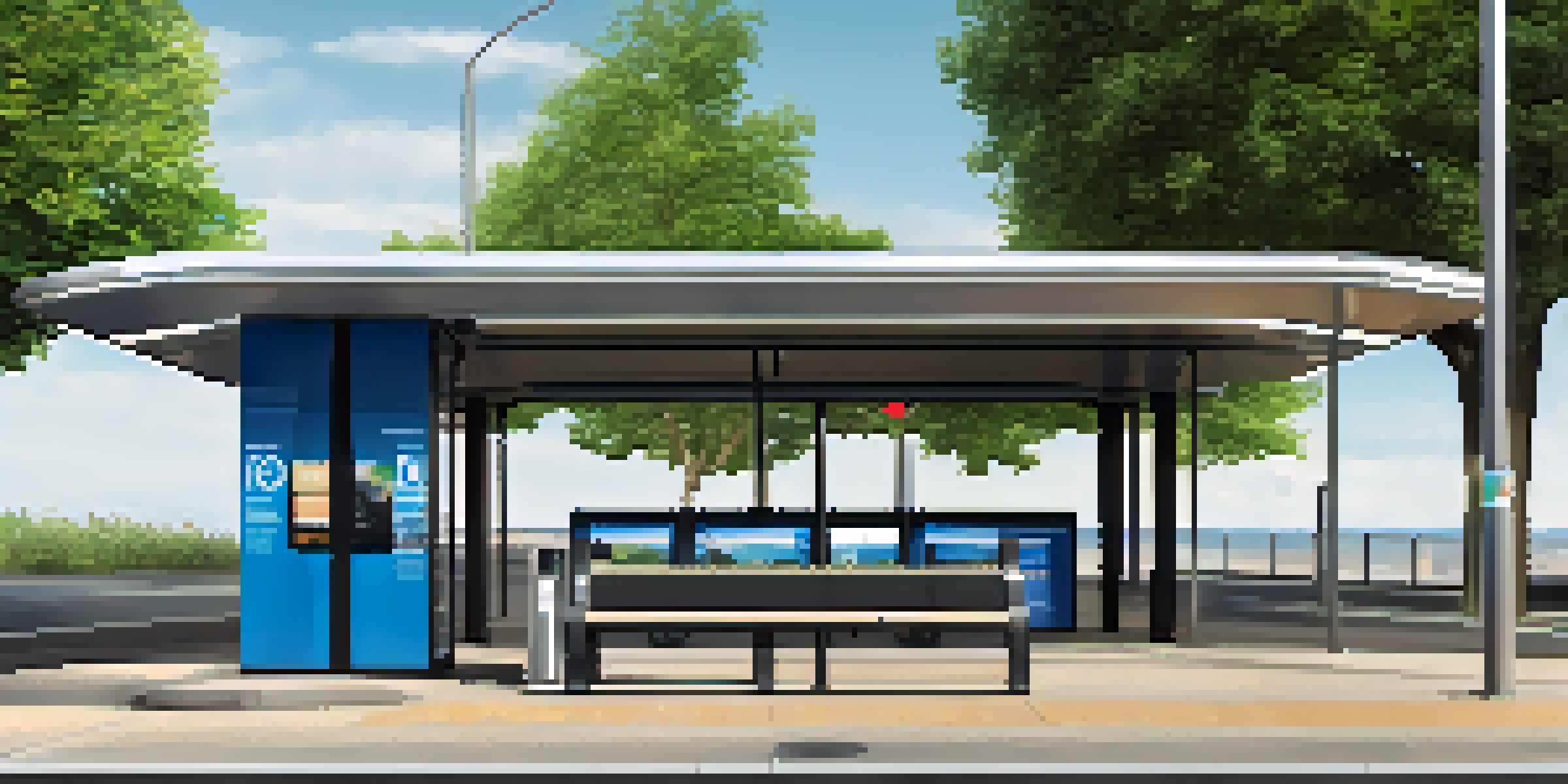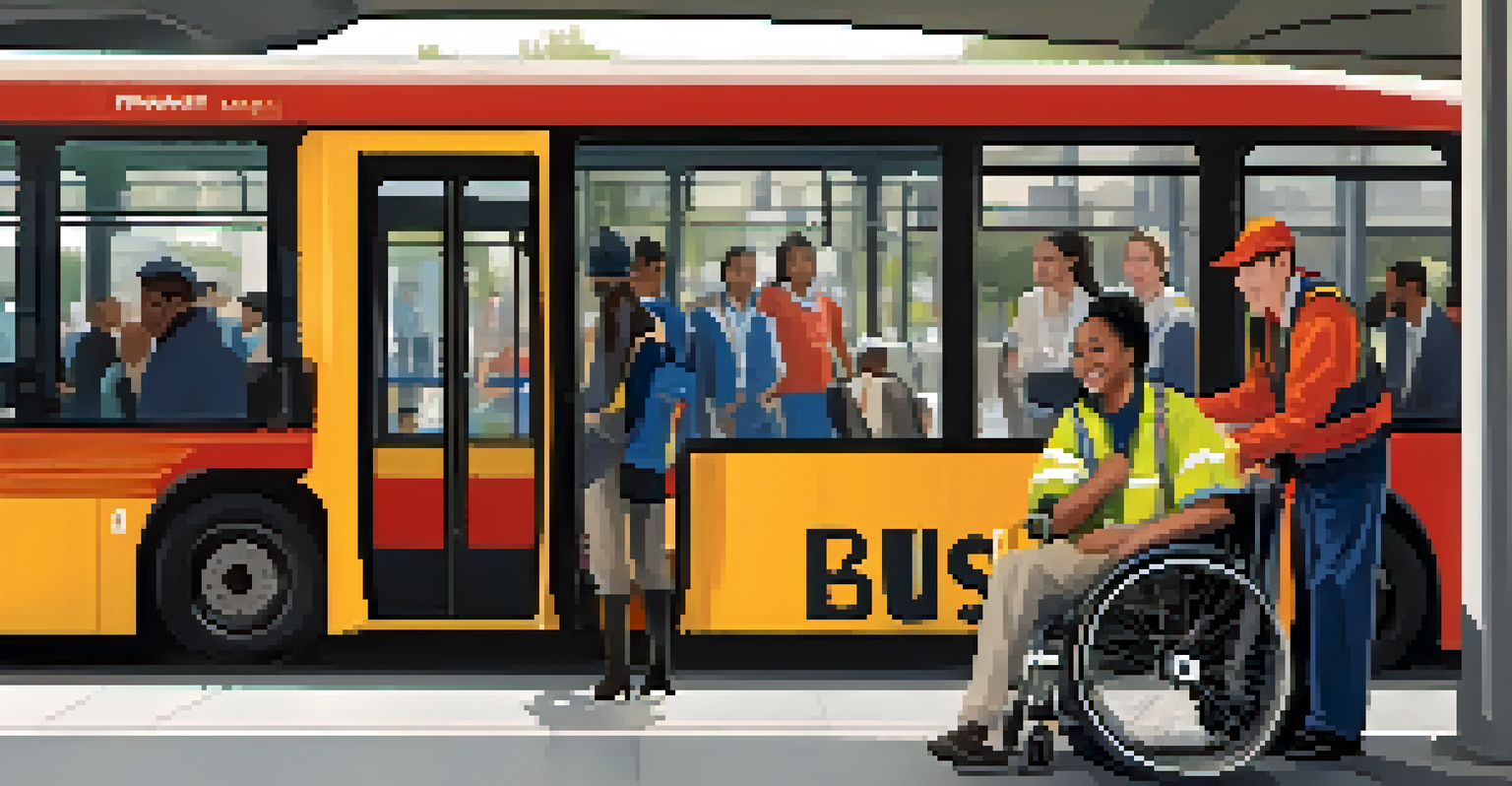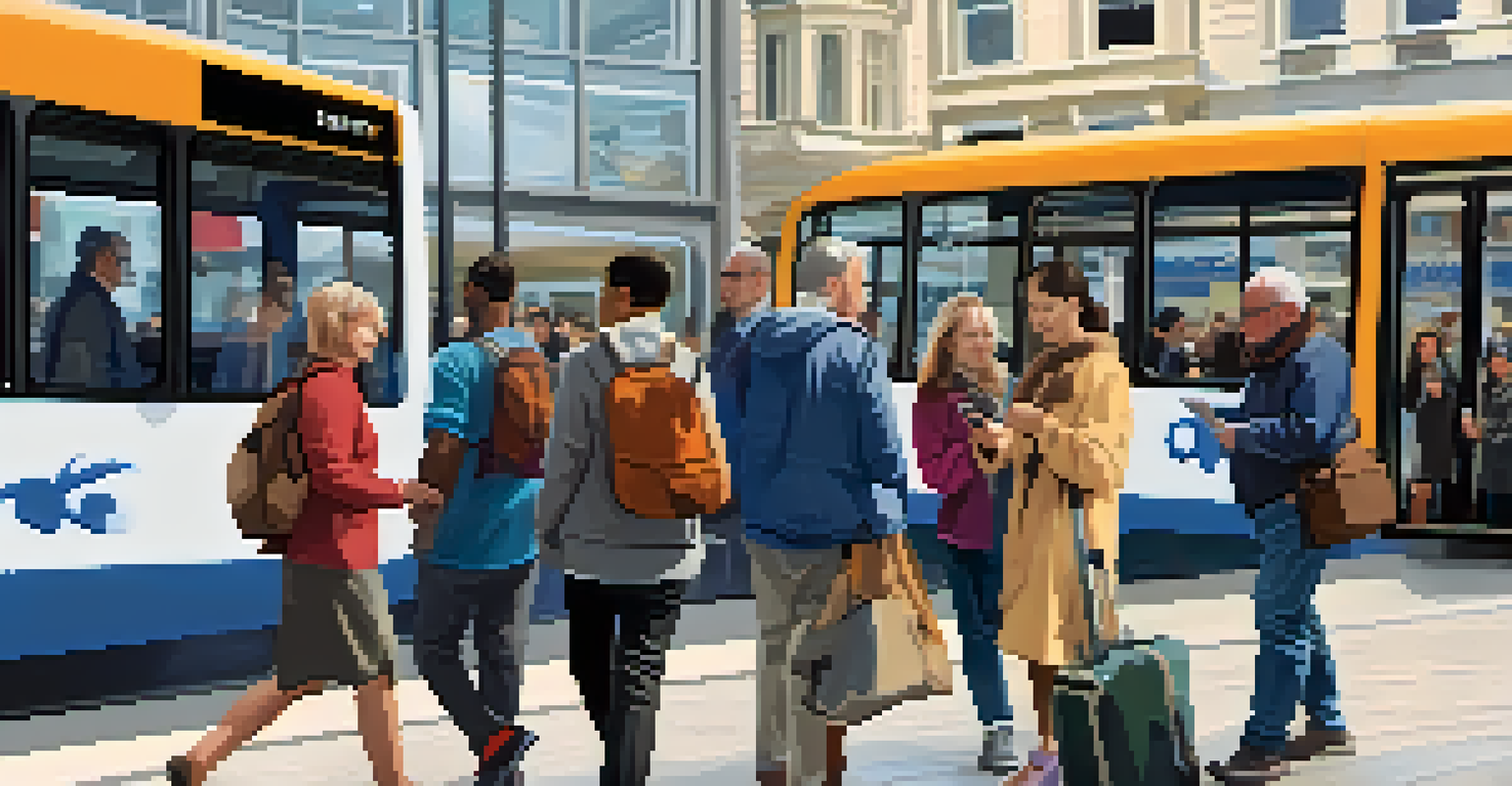Future Improvements for Public Transport Accessibility in Jersey

Understanding Current Accessibility Challenges in Jersey
Public transport in Jersey faces several accessibility challenges that impact daily commuters. Many bus stops lack proper facilities for those with mobility issues, making it difficult for them to travel independently. Additionally, the transportation network can be confusing for users with visual impairments due to insufficient signage and tactile guidance.
Accessibility allows us to tap into everyone's potential.
Moreover, the limited availability of accessible vehicles adds to the frustration. While some services are equipped to accommodate wheelchairs, they are not widespread, leading to gaps in service for those who need them most. This creates a reliance on personal transportation or informal arrangements, further isolating individuals with disabilities.
Addressing these issues is crucial not only for compliance with accessibility regulations but also for enhancing the quality of life for all residents. As Jersey seeks to improve its public transport system, understanding these current challenges is the first step towards meaningful change.
Incorporating Universal Design Principles in Future Plans
Universal design focuses on creating environments that are accessible to everyone, regardless of age or ability. By incorporating these principles into public transport planning, Jersey can ensure that all facilities, from bus stops to vehicles, are user-friendly. This means designing spaces that are easy to navigate, with features like ramps, wide doorways, and clear signage.

For instance, implementing audio announcements and visual displays on buses can greatly assist passengers with hearing or visual impairments. Additionally, sensible layout designs that minimize obstacles can help those with mobility devices navigate more easily. These thoughtful enhancements not only benefit those with disabilities but also create a more inclusive environment for all users.
Addressing Public Transport Challenges
Jersey's public transport system faces significant accessibility challenges, particularly for individuals with mobility and visual impairments.
Adopting universal design principles can lead to a seamless travel experience, fostering a sense of community and encouraging more people to use public transport. As Jersey embarks on future improvements, this approach should be at the forefront of all discussions.
Investing in Accessible Transport Infrastructure
To truly enhance public transport accessibility, Jersey must invest in its infrastructure. This includes upgrading existing bus stops with shelters, seating, and real-time information displays that cater to all passengers. Such improvements not only make waiting more comfortable but also ensure that everyone can access timely travel information.
The future belongs to those who believe in the beauty of their dreams.
Additionally, the integration of accessible technology can revolutionize the way passengers interact with public transport systems. For example, mobile apps that provide real-time updates on vehicle locations and accessible routes can empower users, allowing them to plan their journeys more effectively. This tech-driven approach can bridge the gap between traditional transport services and modern user needs.
Investment in infrastructure is not just about physical changes; it's about creating a culture of inclusivity. By prioritizing these enhancements, Jersey can transform its public transport system into one that genuinely serves the needs of every community member.
Enhancing Training for Public Transport Staff
Public transport staff play a pivotal role in ensuring accessibility. Therefore, enhancing training programs for drivers and support staff is essential. By educating personnel on the specific needs of passengers with disabilities, they can provide more effective assistance and foster a welcoming atmosphere.
Training should cover a variety of topics, including how to assist passengers with mobility challenges, understanding the needs of individuals with sensory impairments, and recognizing the importance of patience and empathy. This not only empowers staff but also builds confidence among users who may be hesitant to seek help.
Investing in Infrastructure Improvements
Enhancing transport infrastructure and integrating technology can significantly improve accessibility and user experience for all commuters.
Investing in staff training demonstrates a commitment to accessibility and inclusivity. When all employees are equipped with the knowledge and skills to assist every passenger, it creates a more cohesive and supportive public transport environment.
Collaborating with Local Communities for Feedback
Engaging with local communities is vital for understanding the unique accessibility needs of Jersey’s residents. By creating forums and feedback channels, transport authorities can gather insights from individuals with disabilities and their advocates. This collaborative approach ensures that future improvements are grounded in real-world experiences and needs.
For instance, hosting workshops or focus groups can facilitate meaningful discussions about existing barriers and potential solutions. Community members can share their suggestions and experiences, helping to shape policies that genuinely reflect their needs. This grassroots involvement fosters a sense of ownership and empowerment among residents.
Ultimately, collaboration enhances transparency and builds trust between authorities and the community. When people feel heard, they are more likely to support and engage with public transport initiatives, leading to a more accessible future for all.
Leveraging Technology for Enhanced Accessibility
Technology has the power to transform public transport accessibility in Jersey. Utilizing GPS and mobile applications can provide real-time updates and information about public transport services, helping users navigate the system more efficiently. For example, apps that highlight accessible routes and services can be a game-changer for those with mobility challenges.
Moreover, the implementation of smart ticketing systems can simplify the travel experience for everyone. By allowing users to purchase tickets via mobile devices or contactless cards, the process becomes more straightforward and less daunting, especially for those who may struggle with traditional ticket machines.
Engaging Communities for Better Solutions
Collaborating with local communities through feedback and workshops is essential for understanding and addressing the unique accessibility needs of residents.
By embracing technology, Jersey can create a more user-friendly transport system that meets the diverse needs of its population. This forward-thinking approach not only enhances convenience but also demonstrates a commitment to inclusivity in public services.
Creating Awareness and Promoting Public Transport Usage
Raising awareness about public transport accessibility is crucial for encouraging usage among all residents. Campaigns that highlight the available services and improvements can inform the community and dispel any misconceptions about public transport being inaccessible. This can help shift perceptions and foster a culture of inclusivity.
Engaging storytelling can be effective in showcasing real-life experiences of individuals who benefit from accessible public transport. This not only humanizes the issue but also inspires others to advocate for and utilize these services. By sharing positive stories, Jersey can motivate more residents to embrace public transport as a viable option.

Ultimately, promoting awareness is about creating a community that values and supports accessible transport. When residents understand the benefits and improvements made, they are more likely to be active participants in the system, helping to pave the way for a more inclusive future.